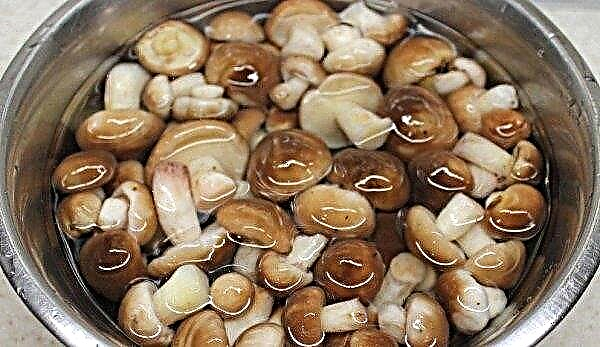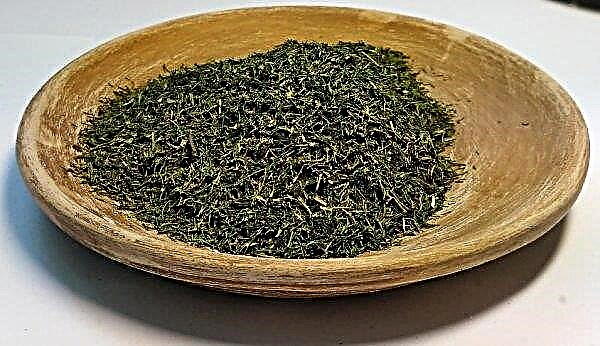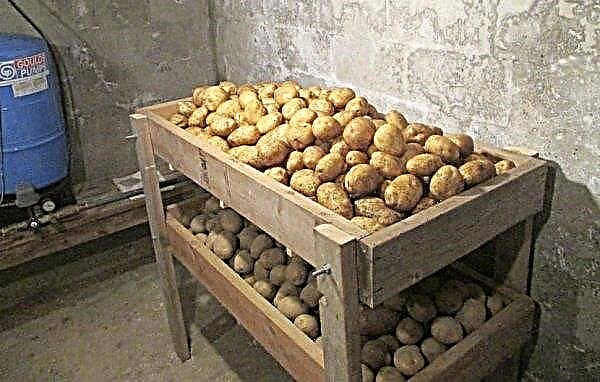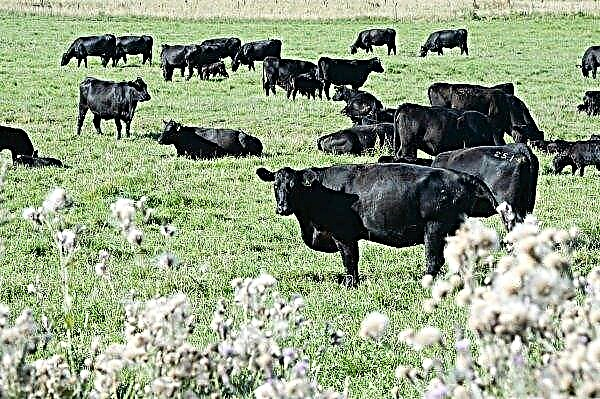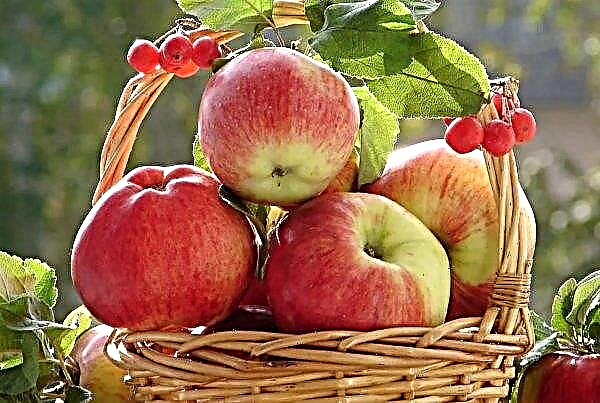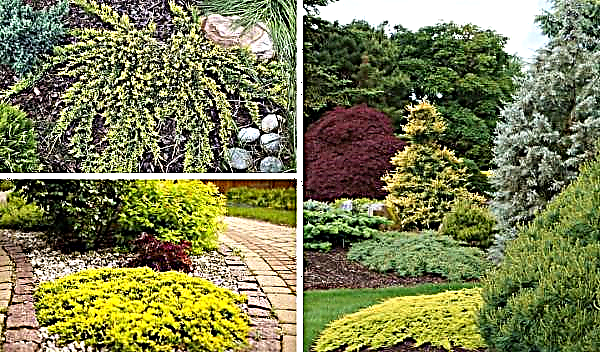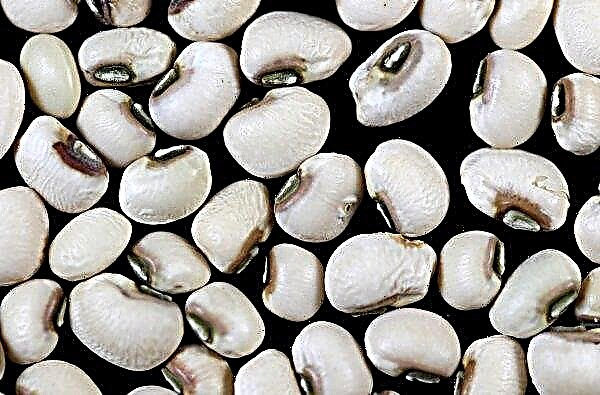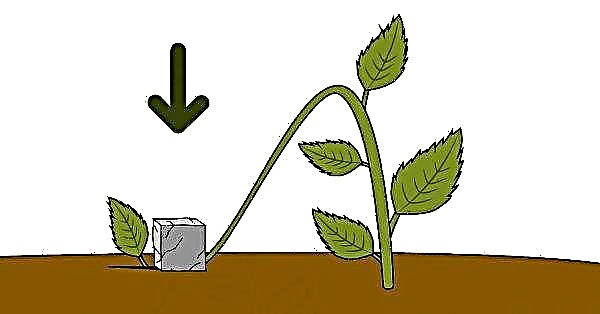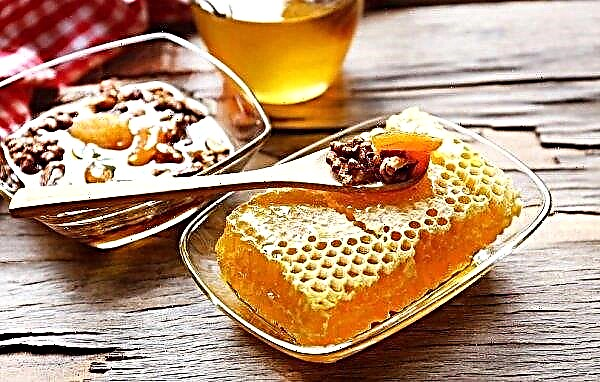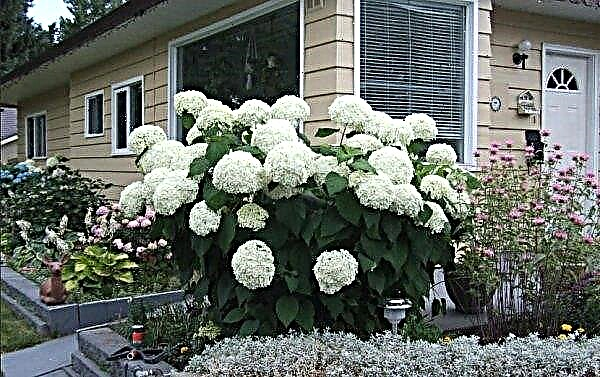Today, there are more than four thousand varieties of potatoes that differ in taste characteristics, ripening dates, and the size of tubers. For the northern and central regions, the medium-late variety Lorch is an ideal option for cultivation, characterized by excellent fruit taste and versatility. How to properly cultivate the root crop, and when to harvest - read more about this later.
Characterization and description of the variety
The Lorch potato variety is classified as a table species with an average ripening period, the crop of which is harvested 110–120 days after planting. Culture is considered one of the oldest representatives of Russian selection. Its creator is Alexander Lorch, a Moscow academician, and was named after him a vegetable.
Breeding work on the cultivation of a new variety was carried out in 1922, and in the mid-1930s it was added to the state register of garden crops.
Potatoes are suitable for cultivation in different areas: central, western, northern, north-western. It is successfully grown in Ukraine, the Russian Federation, Belarus. Potatoes grow in the form of a large, sprawling bush up to 80 cm high, with a thick stem and medium-sized, slightly dissected leaves of light green color. During flowering, floral corollas are formed on the plant, which have a beautiful violet-red color. After flowering, the formation of berries is practically not observed.
Potatoes grow in the form of a large, sprawling bush up to 80 cm high, with a thick stem and medium-sized, slightly dissected leaves of light green color. During flowering, floral corollas are formed on the plant, which have a beautiful violet-red color. After flowering, the formation of berries is practically not observed.
The fruits of Lorch are large, quite weighty, round-oval, weighing 90–120 g, covered with a dense skin of beige color. The skin of the tubers is smooth, only near the tops of the tuber you can notice a slight peeling. The surface of root crops has a small number of eyes, evenly distributed.
The flesh of the potato is white in color, soft, not watery in structure, does not darken during heat treatment, and is characterized as excellent in taste. The vegetable yield is high. During ripening, 10–15 large-sized fruits are formed under one bush. At the same time, 250-350 centners of potatoes can be harvested from one hectare of the site.
Important! Lorch fruits have a high starch content in the composition, therefore, are not suitable for the preparation of chips, Idaho potatoes, however, are an excellent raw material for the production of starch.
Lorch variety is versatile. Tubers, due to their softness, are used for making mashed potatoes, mashed soups, as well as boiling, stewing, baking, frying.
Pros and cons of growing
- The Lorch potato variety has been cultivated by gardeners for so many decades, because it has a lot of key advantages:
- the ability to grow even in the northern regions;
- undemanding to soil and top dressing;
- excellent yield indicators;
- good transportability and durability;
- excellent flavoring properties of fruits;
- high ecoplasticity, which makes it possible to obtain stable high yields every year;
- resistance to late blight, bacteriosis and viral ailments.
- However, the variety is not without drawbacks:
- low resistance to scab, potato cancer;
- sensitive to high air temperature and moisture deficiency.
Did you know? During the cultivation of potatoes, Alexander Lorch did not use chemicals for feeding, as he believed that they lead to degeneration of the culture and a decrease in the taste of the fruit. On potato fields, he used exclusively organic matter, which is why the variety reacts positively to organic fertilizers today.
Planting potatoes
For high yields, timing, potato planting, and the quality of the seed material matter.
Crop rotation rules
Experienced gardeners, when growing this vegetable, are advised to follow crop rotation rules and not to plant potatoes on the same bed for several years in a row. After it, the soil should "rest" for at least 2-3 years.
The most optimal precursors of potatoes are carrots, cucumbers, legumes, pumpkin. You can not plant vegetables in the beds where tomatoes, sorghum or sunflower used to grow, since the earth after them accumulates parasites and pathogens that have a negative effect on potatoes of this variety.
For planting, a flat, sunny area is suitable, protected from drafts and strong winds, where direct sun rays prevail only in the morning and evening. In shaded areas, the culture will bloom poorly, when exposed to direct sunlight - dry and slow down in growth.
Soil requirements
Lorch is not too demanding on the composition of the soil, but grows better on soils with a low content of clay and sand. Clay soils are characterized by low friability and water permeability, so the plant, even if it sprouts, will not be able to please large, aesthetically beautiful fruits.
To obtain high yields, it is necessary to select nutritious, light, cultivated soils for the plant, for example, loamy or sandy loam. It is also very important to properly prepare the soil. Preparatory work is recommended to begin in the fall.
To do this, you need:
- clean the site of plant waste;
- to carry out peeling - shallow loosening of the soil, which helps to improve fertility and prevents the evaporation of moisture;
- two weeks after peeling, dig up the ground, deepening no less than 30 cm;
- make organic fertilizers using manure per 1 m² 4-6 kg.
 In spring, it is necessary to re-dig soil with a depth of 15–20 cm. Under spring excavation, nitrogen-containing fertilizers should be applied, which will allow root crops to more actively use the moisture remaining from autumn and activate the development and growth of tubers.
In spring, it is necessary to re-dig soil with a depth of 15–20 cm. Under spring excavation, nitrogen-containing fertilizers should be applied, which will allow root crops to more actively use the moisture remaining from autumn and activate the development and growth of tubers.Important! It is not recommended to break up large earthen clods formed after digging the soil, since they allow you to hold the snowball and retain moisture in the soil.
Preparing planting material
It is impossible to achieve good crop yields if poor material is used for planting. As seed material, you should choose medium-sized tubers, weighing about 80 g, with a sufficient number of full eyes, without damage, rot, dry tops.
7-10 days before planting, root crops must be taken out of the basement, washed, dried. Immediately before planting, it is possible to process root crops, which will save potatoes from pests and ailments. To do this, the fruits are soaked for half an hour in a weak solution of potassium permanganate, dried.
Landing pattern
Since Lorch potatoes are characterized by the growth rate and large size of the bushes, it should be planted far from each other. The optimal scheme is considered to be 35 × 70 cm, where 35 cm is the distance between the bushes, 70 cm is the row spacing. In this case, the depth of planting of tubers should be 8–10 cm.
Planting root vegetables consists of several stages:
- Dig a recess with a shovel, at the bottom of which to place fertilizers.
- Tubers down into the hole sprouts up.
- Sprinkle with a layer of soil.
 To plant potatoes on dry soils, you can practice the trench method:
To plant potatoes on dry soils, you can practice the trench method:- Dig a trench about 30 cm deep.
- Arrange the seed material in the recesses with the sprouts up.
- Sprinkle with soil.
Important! It is forbidden to cut the seed in half, since such manipulations lead to a decrease in yield.
Features of cultivation and care after planting
Growing and caring for potatoes of this variety is not much different from similar events conducted with other varieties of culture.
The main thing is to follow the rules of agricultural technology and organize a comfortable living environment for the plant:
- Watering. Potato Lorch needs regular and abundant hydration, which is carried out before emergence, before flowering, during the period of its intensive flowering and immediately after its completion. In the absence of sufficient rainfall, watering the bushes must be done at least once every 7-10 days. To moisturize, it is necessary to use warm, settled water in a dosage of 3-4 liters of water per plant.
- Top dressing. Lorch cultivar needs nutritious soil, so regular organic fertilizing, for example, manure or compost, is required. During the season, you need to fertilize three times: when planting, before the first hilling procedure, during the flowering period.
- Hilling. Earthen hills around the bushes retain water in the ground, protect young shoots from return frosts, and keep root crops in a group. Do at least 2 times per season: the first - when the sprouts reach a size of 15 cm, the second - 2-3 weeks after the first.
- Soil care. To prevent moisture evaporation from the soil, as well as to saturate the soil with oxygen and nutrients, loosening and mulching are necessary. Loosen the soil after each watering. This softens the upper hard soil layer, activates gas exchange processes in tubers. Mulching is recommended only with dry grass or hay. Mulch retains moisture well, inhibits weed growth. As necessary, weed potatoes should be weeded. It is especially important to carry out the procedure before the flowering of parasite plants.

Potato Diseases and Pests
Potato Lorch has strong immunity and resistance to viral bacteriosis, late blight, verticillosis, and viral diseases.
Did you know? Despite the fact that today potatoes are grown everywhere in Europe and are an indispensable product in the cuisines of many European countries, Central America, where it was brought from at the end of the 16th century, is its homeland. The root crop was brought to Russia by Peter I, who wanted to feed the entire Russian people with a simple vegetable.
Often, due to non-compliance with the basic rules of growing, a vegetable is exposed to:
- Scab. On the surface of the tubers small light brown ulcers or thickenings similar to warts are formed, the palatability of the fruits is deteriorated and their presentation is reduced. Over the season, the scab can kill more than half of the entire crop. Unfortunately, there is no cure for scab. To prevent its development, preventive measures should be taken in time.
- Potato crayfish. The disease affects root crops, as a result of which outgrowths, outwardly similar to cauliflower inflorescences, grow on the surface of the eyes. At the initial stage, the growths have a light yellow color, then they become brown and begin to rot. The use of tubers affected by cancer is not recommended. To combat the disease, the infected bushes are completely destroyed, the soil is sprinkled with lime. Re-growing potatoes in this area is allowed only after 7 years.


In addition to diseases, Lorch potatoes can become "prey" for some parasites.
In particular:
- Colorado potato beetle. The pest eats tubers, foliage, stalk, as a result of which the plant is depleted and stops its development. In the fight against the beetle, which can adapt to all climatic conditions, modern special preparations, for example, Aktara or Prestige, or effective folk remedies such as tar, urea, dill, as well as collecting larvae and beetles by hand, will help.
- Bears. The parasite infects the stem of the plant, breaks the root system, eats tubers, and as a result, the bush dies, and root crops become unsuitable for human consumption. It is customary to fight the bear and its larvae by means of special means - Medvetoks, Grizzly, Thunder, which are scattered in the indentations formed between the rows of potatoes.


Features of harvesting and storage of crops
Potatoes are harvested 110–120 days after planting the seed, in late August or early September, depending on the weather conditions in the region. A few days before digging, it is recommended to cut the tops of the plants on the site and remove all weeds.
Important! For the prevention of potato cancer, one year before planting, any cereal is sown on the site. After them, the disease does not appear for about 6 years.
Digging potatoes in dry, warm weather. Sort the collected root crops, remove rotted, dry, damaged tubers. Arrange the fruits on nets, boxes or bags.
Keep the crop should be in a dry, cool place, at a temperature of no more than +4 ... + 7 ° C and air humidity not higher than 85%. The fruits are characterized by excellent keeping quality, able to maintain taste and aesthetic qualities until the next season.
The only thing is that the tubers must be protected from high humidity or prolonged exposure to direct sunlight. Potato Lorch deserved, more than 80 years in demand among farmers. Its popularity is explained by high productivity, unpretentiousness in leaving, simplicity in cultivation and a possibility of application of fruits for industrial purposes.
Potato Lorch deserved, more than 80 years in demand among farmers. Its popularity is explained by high productivity, unpretentiousness in leaving, simplicity in cultivation and a possibility of application of fruits for industrial purposes.
Important! Root vegetables with a green color, which arose due to the action of sunlight, can not be eaten, because they contain a toxic substance — solanine.
The only problems that gardeners may encounter during cultivation are low plant resistance to scab, potato cancer, the effects of the Colorado potato beetle and bear.

